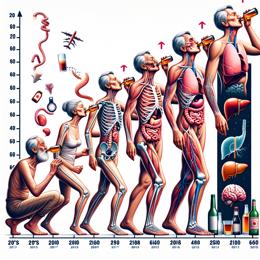Content created by AI
Healing Childhood Trauma: A Step-by-Step Approach to Wellness
Childhood trauma can insidiously affect individuals well into adulthood, shaping lives in ways that often go unrecognized. Through the shroud of time, the impacts of traumatic events such as violence, abuse, or accidents can surface in the form of anxiety, depression, and a myriad of emotional difficulties. In South Africa, a nation deeply familiar with various forms of social and personal trauma, understanding and addressing this issue is of paramount importance.
Recognizing the profound effects trauma can have on an individual’s life, experts have developed effective methods for coping with and treating its lingering presence. The journey towards healing is delicate and challenging but anchored in a step-by-step process that promises the hope of recovery.
The first crucial step in this healing journey is acknowledging the trauma. This involves revisiting painful memories, a task many find daunting. It could be as symbolic as facing a dark room, or confronting a triggering smell that takes one back to the moment of trauma.
Thwala, a leading therapist in the field, emphasizes that after acknowledging the traumatic events, individuals must be willing to thoroughly recall and explore their experiences. This may require revisiting unsettling memories but is necessary for progressing in the healing process.
Once an individual has faced and recognized their trauma, the next step is to enlist professional support. Personalized programs, tailored to address the unique experiences and needs of each person, serve as a vital platform for recovery. Such assistance can guide individuals through the murky waters of their past pain towards a clearer, calmer present.
In addition to psychological therapy, physiological aspects should not be overlooked. Thwala advises a holistic approach, including a check on dietary habits. Healing from trauma involves the entire body, and nourishing oneself with healthy food is key to having a clear mind and a resilient body. Toxins, not just in foods but also in thoughts, must be purged.
The fourth and final step is perhaps the most liberating—letting go. It is crucial for individuals to reach a point where they can release their grip on the trauma and move forward. This involves not only forgiving others but also oneself. The task is arduous, but as Thwala notes, it is essential to do the work and allow oneself to heal, truly and fully.
In an era where mental health is being discussed more openly, yet still often stigmatized, these steps present a framework that not only offers understanding but also tangible actions that one can take to recover from trauma. South Africans, just like any other community grappling with the effects of past wounds, can find solace and strength in such healing programmes, working towards a future where the past does not dictate the quality of their present life.
For those who carry the weight of traumatic experiences, these steps may provide a beacon of hope and a path towards a healthier, more fulfilling life. It is never too late to address the scars of yesteryears and embark on a journey towards healing and wellbeing.










